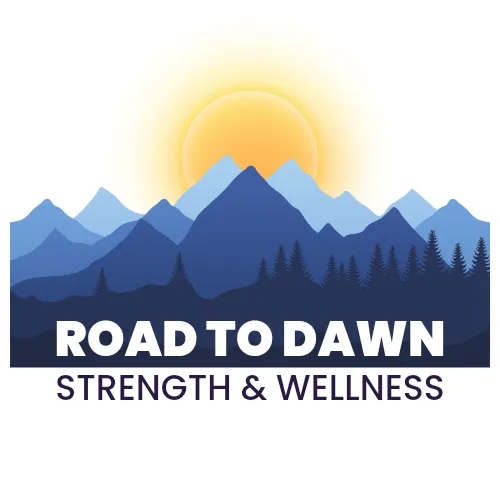The Overcoming Obstacles Blog
Balance: The Overlooked Performance Booster That Can Help You Live Longer
When most people hear the word balance, they think of standing on one leg with their arms waving around, or maybe doing some circus act on a stability ball at the gym. But balance isn’t a gimmick — it’s one of the most underappreciated athletic skills that directly impacts your performance, your ability to train pain-free, and even how long you live.
Let’s break it down.
What Balance Actually Means
Balance is your body’s ability to maintain control of your center of mass over your base of support. That means when you’re running, lifting, or navigating obstacles, your brain, muscles, and joints are constantly coordinating to keep you upright and moving efficiently.
It’s not just “not falling.” It’s dynamic. Balance is a mix of:
Proprioception (your body’s awareness of position in space)
Strength (especially calves, hips, and core)
Reaction time (how quickly you correct when you’re off-balance)
Coordination between your nervous system and musculoskeletal system
So when you think balance, don’t just think yoga tree pose. Think of your body’s built-in “stability software” working in real-time.
What Balance Is NOT
Balance is not about wobbling on a BOSU ball for Instagram likes. BOSUs are stupid anyway.
It’s not about circus tricks.
And it’s not something only seniors need to worry about.
For hybrid athletes, balance is about running with efficiency, sticking landings on box jumps, controlling heavy lunges at HYROX or DEKA, and not wasting energy on sloppy mechanics. It’s performance — not fluff.
How Balance Improves Performance
Here’s the part athletes care about: balance directly influences your speed, power, and efficiency.
A few highlights from the research:
A study in the Journal of Strength and Conditioning Research found that improved balance training enhanced sprint and jump performance in athletes (Granacher et al., 2010).
Another study in the Scandinavian Journal of Medicine & Science in Sports showed that neuromuscular training (including balance drills) reduced injury risk by improving joint stability and muscle coordination (Zebis et al., 2009).
For runners specifically, balance training improves stride efficiency by reducing unnecessary lateral motion — meaning you waste less energy and move forward faster.
When your body can stabilize better, every stride and every lift becomes more efficient. That’s free performance gains. In running in between stations, and in single leg work during the lunges in your next HYROX.
Balance and Longevity
Now here’s the part that should make you pause: balance literally predicts survival. Yes, seriously.
A large 2022 study published in the British Journal of Sports Medicine followed middle-aged and older adults for 12 years. Those who couldn’t stand on one leg for 10 seconds were almost twice as likely to die in that timeframe compared to those who could (Araújo et al., 2022).
Why? Poor balance is linked to higher fall risk, reduced mobility, and lower overall health resilience. Balance is not just athletic performance — it’s a biomarker for how well your brain and body are communicating. Better balance = longer, healthier life.
How to Train Balance the Right Way
Here’s the good news: balance is trainable at any age. And for hybrid athletes, it doesn’t take circus tricks — just smart, progressive exercises.
Start with stability in strength work:
Single-Leg Romanian Deadlifts (RDLs) – Builds hamstring + glute stability while training balance in motion.
Split Squats / Bulgarian Split Squats – Force your body to stabilize under load, building strength and control.
Step-Ups with Knee Drive – Adds dynamic hip stability and mimics running mechanics.
Add reactive and proprioceptive work:
Single-Leg Hops (forward/side-to-side) – Teaches your body to stabilize quickly after impact.
Lateral Bounds – Builds athletic stability in the frontal plane (often neglected).
Banded Marches or Cable Marches – Strengthens hip flexors and challenges your core + balance at the same time.
And yes, you can sprinkle in static balance work:
Single-Leg Balance with Eyes Closed – Removes visual input, forcing your proprioceptors to fire.
Heel-to-Toe Walks – Simple but effective for ankle + foot stability.
Notice under "Proprioception," is NOT balancing on a BOSU.
The Bottom Line
Balance isn’t optional. It’s not fluff. It’s not just for older adults trying not to fall. Balance is a performance enhancer, an injury reducer, and a predictor of how long you’ll live.
For hybrid athletes, balance training means stronger running mechanics, cleaner lunges, and less wasted energy. For everyone, it means better resilience and independence as you age.
So if you want to perform better and stick around longer to enjoy those PRs, make balance a cornerstone of your training. If you need some assistance with your training and help filling in the GAPS to improve performance, click here.

QUICK LINKS
GET IN TOUCH
Home Base: Little Chute, WI
(516) 924-6062
Monday - Saturday : 8:00 - 5:00
© 2024 Road to Dawn Strength and Wellness